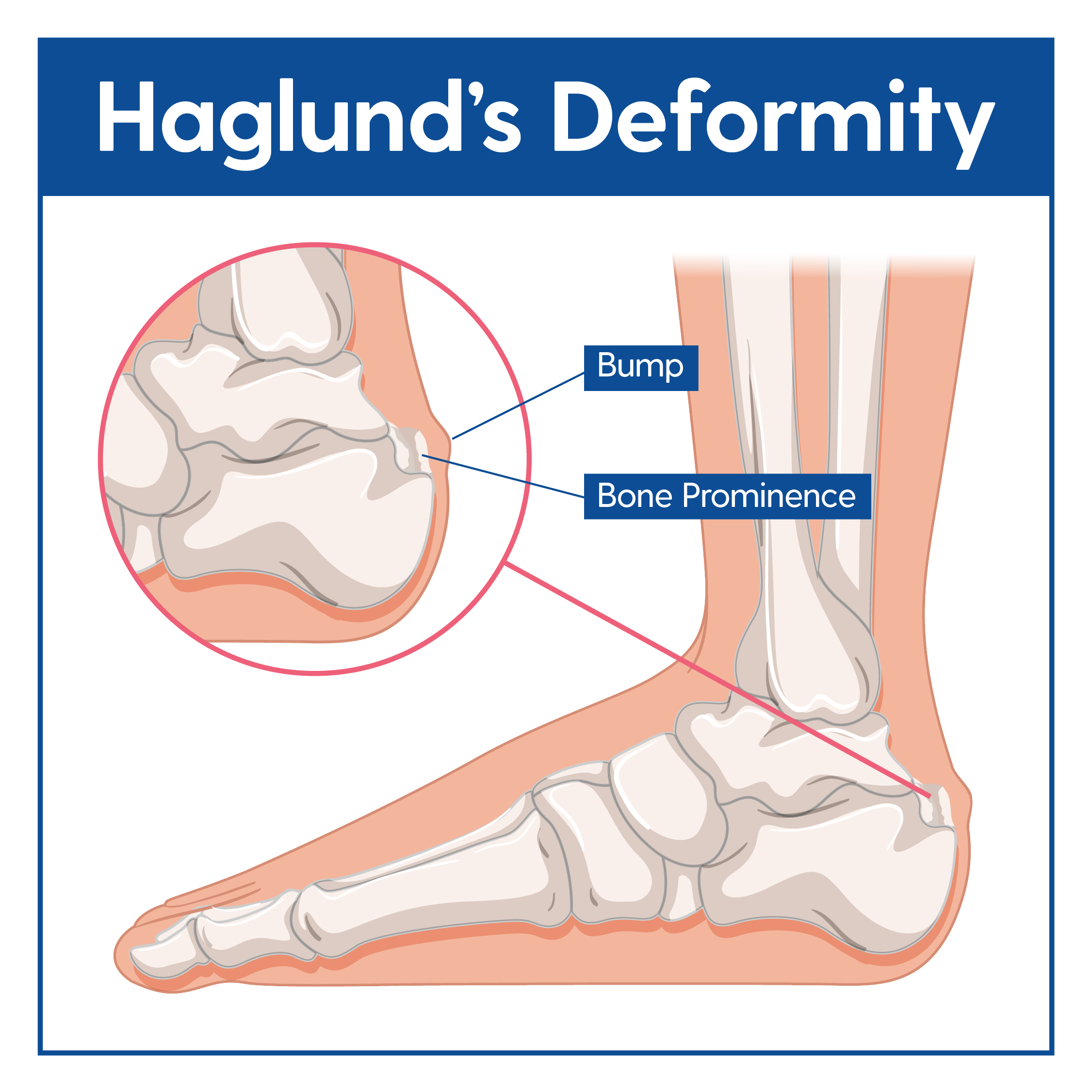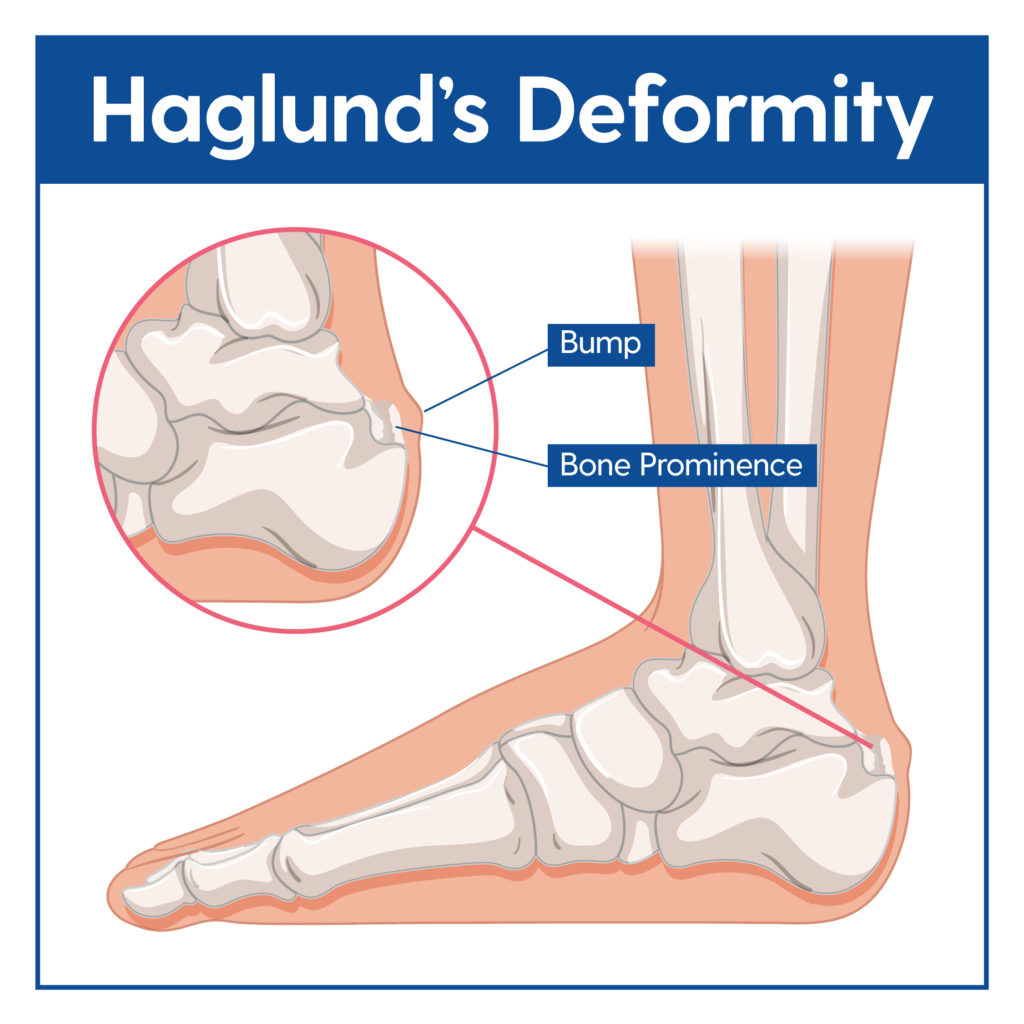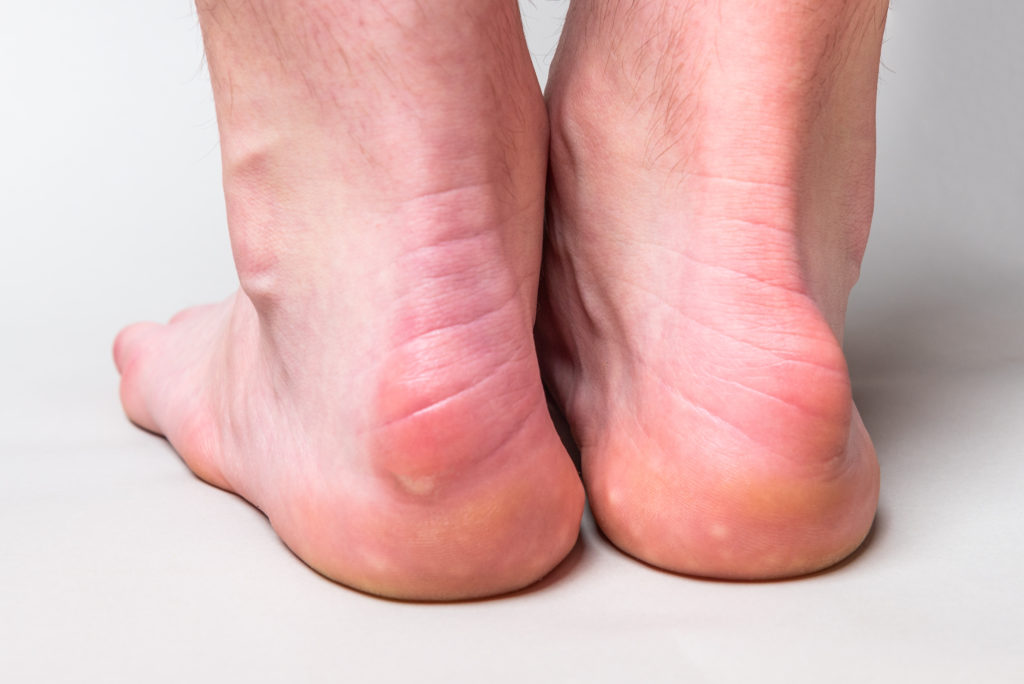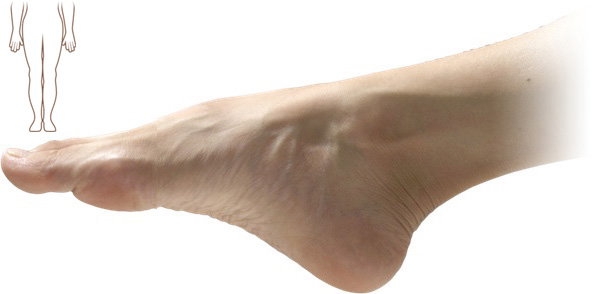

A Haglund’s deformity is a bony bump at the back of the heel, close to where the Achilles tendon attaches. The size of the bump can vary depending on severity, but if you have it, you’ll be able to visibly notice the bump protruding at the back of your heel. As it is associated with rubbing and pressure, it’s also likely that the bump will be a little red in colour.
Why have I developed this bony bump?
The most common cause for this bony enlargement is from repetitive rubbing against the back of the heel from your footwear, which is why it is often coined as the term pump bump – with pump-style shoes being a traditional cause for the rubbing and friction. With this said, any shoes that have a rigid backing or a tight or improper fit can lead to its development.
Symptoms: They don’t stem from the bump itself
When it comes to the symptoms of a Haglund’s deformity, it’s important to note that they don’t stem from the mere presence of the bump itself, which you may have for years before experiencing additional pain, but from continuing rubbing against the bump and the back of the heel from footwear or other causes that irritate the surrounding structures at the back of the heel. This includes the bursa and the Achilles tendon, as well as from blistering and the development of callus, corns and other problems associated with rubbing and friction.

The symptoms can be worsened by other factors
The painful or uncomfortable symptoms can then be worsened by other factors including injury to the heel itself, tight calf muscles or tightness at the Achilles tendon, poor foot biomechanics like excessively rolling inwards (overpronation) or outwards (over supination), gait abnormalities and more.
Treating a Haglund’s deformity
If you are not experiencing any painful symptoms
If you’ve noticed a bony protrusion at the back of your heel but are not experiencing any painful symptoms, there is little that can be done to reduce the bony enlargement. The presence of the bump doesn’t necessarily indicate a problem or that you’ll definitely develop painful symptoms in the future – but it does increase your chance of doing so.
The best care is avoiding tight and rigid footwear that may rub against the bump and cause future irritation. If your calves or Achilles tendon is tight, stretching them can help reduce the likelihood of the tendon rubbing against the bump and causing pain. Using devices like custom foot orthotics that control gait and structural abnormalities that may also contribute to the rubbing can also be helpful.
If your Haglund’s deformity is tender, swollen or causing you pain
In this case, treatment is focused on both relieving your current painful symptoms from your resulting bursitis, tendonitis or the irritation of the other structures surrounding the bump. Next, we’ll prevent them from returning in the future by reducing the likelihood of more tension and rubbing in the future. This may include:
- Avoiding tight or rigid footwear that would continue to rub against the back of your heel
- Resting, icing and elevating the heel
- Using non-steroidal anti-inflammatories (NSAID’s) to reduce swelling and hence pain
- Using heel lifts to reduce the strain on the back of the heel
- Using custom foot orthotics to reduce tension from the back of the heel, correct any contributing biomechanical abnormalities, and reduce the likelihood of the problem returning in the future
- Physical therapy to stretch tight muscles such as the calves and the Achilles tendon
It is important to have your feet and legs professionally assessed by your podiatrist to understand both the factors that have led to the growth of your bump, as well as what has caused the current irritation of your surrounding structures. From this assessment, you are able to have a tailored plan created that is geared at getting the best results for your feet and your symptoms, both immediately and in the long-term.



